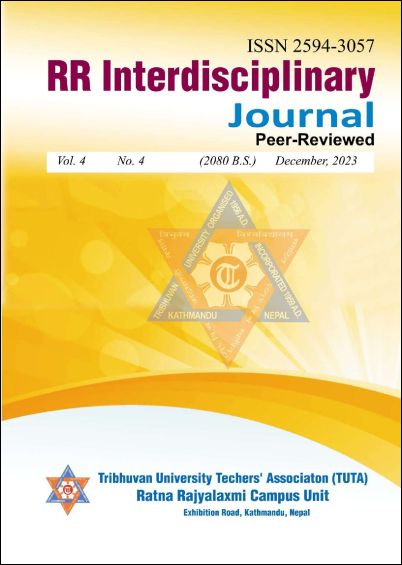Occupational Shift among Dalits
DOI:
https://doi.org/10.3126/rrij.v4i4.62617Keywords:
Dalit, occupational shift, patron-client relations, caste and livelihood diversificationAbstract
This paper examines how caste relations are affecting conventional caste-based artisan occupations at present changing scenario of Nepali society. Its focus has been to examine how changes in livelihoods have affected the traditional occupational status of Dalits in semi-rural parts of the Kaski district. Relationship between Dalit and non-Dalit families, traditional artisan and occupations have been an integral part of Nepalese society and culture. They have bound Nepali families together based on their livelihoods. Patron-client relationships between Dalits and non-Dalits, on the other hand, were based on an unequal relationship. This relationship is labeled “unequal” because the people belonging to the Dalit community have been discriminated all life in social practices while having a no way out to escape from the clutches of the cashless peasantry and artisan occupations of the 'Balighare and Hali pratha' while lagging behind in land ownership. Sewing, Ploughing, and Blacksmithery, works based on birth were common. This form of patron-client relationship where the upper castes exploitatively extracted more from what the Dalits had to offer is best termed as an “unequal relationship”. For the purpose of this qualitative research, on-site interviews were arranged with the sixty members from the Dalit households, as per the consent and availability of the participating families. All of them had a history of working the traditionally assigned artisan occupations, while some of them still continued doing so. Most respondents have terminated 'bali pratha' which was based on patron-client relationships between Dalits and non-Dalit families. The young generation shows indifference to the forefather's occupation. Different factors, like the market-based production system and migration trends and the influences of urbanization encourage them to change their traditional occupations. Large numbers of Dalits are now employed in non-agricultural areas for a living. Similarly, livelihood diversification is helping weaken the caste-based occupation in the study area.




